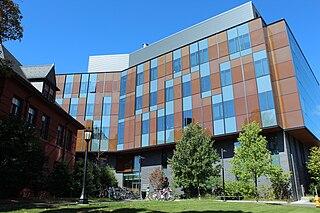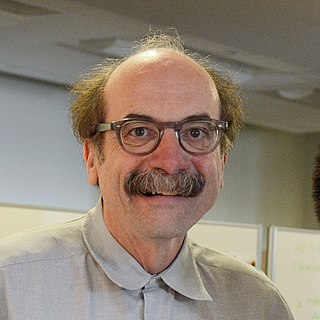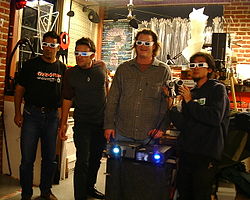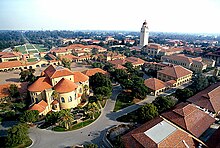
The Technion – Israel Institute of Technology is a public research university located in Haifa, Israel. Established in 1912 under the dominion of the Ottoman Empire, the Technion is the oldest university in the country. The Technion is ranked as one of the top universities in both Israel and the Middle East, and in the world's top 100 universities in the 2022 Academic Ranking of World Universities.
The Walter A. Haas School of Business, also known as Berkeley Haas, is the business school of the University of California, Berkeley, a public research university in Berkeley, California. It was the first business school at a public university in the United States and is ranked among the best business schools in the world by The Economist, Financial Times, QS World University Rankings, U.S. News & World Report, and Bloomberg Businessweek.

The School of Engineering is one of the ten schools that comprise Tufts University. The school offers undergraduate and graduate degrees in several engineering disciplines and computer science fields. Along with the School of Arts and Sciences (A&S) and the Fletcher School of Law and Diplomacy, the School of Engineering is located on the university's main campus in Medford and Somerville, Massachusetts. Currently, the engineering school enrolls more than 800 full-time undergraduates and 600 graduate students. The school employs over 100 full-time and part-time faculty members.

Established in 1909, the Robert R. McCormick School of Engineering and Applied Science is one of twelve constituent schools at Northwestern University. Most engineering classes are held in the Technological Institute (1942), which students commonly refer to as "Tech." In October 2005, another building affiliated with the School, the Ford Motor Company Engineering Design Center, opened.
Design thinking refers to the set of cognitive, strategic and practical procedures used by designers in the process of designing, and to the body of knowledge that has been developed about how people reason when engaging with design problems.

Gaziantep University is a public university in Gaziantep, Turkey. Gaziantep University has 10 faculties, containing a total of 22 academic departments, with a strong emphasis on scientific and technological research.

The University of Pennsylvania School of Engineering and Applied Science is the undergraduate and graduate engineering school of the University of Pennsylvania, a private research university in Philadelphia. The school offers programs that emphasize hands-on study of engineering fundamentals while encouraging students to leverage the educational offerings of the broader University. Engineering students can also take advantage of research opportunities through interactions with Penn’s School of Medicine, School of Arts and Sciences and the Wharton School.

The A. James Clark School of Engineering is the engineering college of the University of Maryland, College Park. The school consists of fourteen buildings on the College Park campus that cover over 750,000 sq ft (70,000 m2). The school is near Washington, D.C. and Baltimore, as well as several technology-driven institutions.
The College of Engineering and Applied Science is the engineering and applied science college of the University of Cincinnati in Cincinnati, Ohio. It is the birthplace of the cooperative education (co-op) program and still holds the largest public mandatory cooperative education program at a public university in the United States. Today, it has a student population of around 4,898 undergraduate and 1,305 graduate students and is recognized annually as one of the top 100 engineering colleges in the US, ranking 83rd in 2020.

Nanchang University is a provincial public university located in Nanchang, Jiangxi, China. The university is affiliated with the Jiangsu Provincial People's Government with co-sponsorship from the Ministry of Education of China. The university is a member of the Double First Class University Plan and the former Project 211.
The Irwin and Joan Jacobs School of Engineering is an undergraduate and graduate-level engineering school offering BS, BA, MEng, MS, MAS and PhD degrees at the University of California, San Diego in San Diego, California. The Jacobs School of Engineering is the youngest engineering school of the nation's top ten, the largest by enrollment in the University of California system, as well as the largest engineering school on the West Coast and the ninth-largest in the country. More than thirty faculty have been named members of the National Academies. The current dean of the Jacobs School of Engineering is Albert P. Pisano. The Jacobs School of Engineering sends a monthly news email which anyone can subscribe to.

The John and Marcia Price College of Engineering at the University of Utah is an academic college of the University of Utah in Salt Lake City, Utah. The college offers undergraduate and graduate degrees in engineering and computer science.

The Segal Design Institute is a design thinking institute at Northwestern University. Segal operates within the McCormick School of Engineering and Applied Science and is dedicated to the study of human-centered design at the undergraduate and graduate level.
Stanford University has many centers and institutes dedicated to the study of various specific topics. These centers and institutes may be within a department, within a school but across departments, an independent laboratory, institute or center reporting directly to the dean of research and outside any school, or semi-independent of the university itself.

David M. Kelley is an American engineer, designer, entrepreneur, businessman, and educator. He is co-founder of the design firm IDEO and a professor at Stanford University. He has received several honors for his contributions to design and design education.
Rolf A. Faste (1943–2003) was an American designer who made major contributions to the fields of human-centered design and design education. He is best known for his contributions to design thinking which he advanced as a 'whole person' approach to problem solving centered on the perception of needs. He was professor of industrial design at the Syracuse University from 1971 to 1983, and professor of mechanical engineering and director of the Stanford Joint Program in Design from 1984 to 2003.
The Hasso Plattner Institute of Design at Stanford, commonly known as the d.school, is a design thinking institute based at Stanford University. David M. Kelley and Bernard Roth founded the program in 2004. According to the New York Times, the d.school has become one of the most highly sought academic programs at Stanford.
The School of Architecture and Design (Arc/D) is an independent professional school of the University of Kansas (KU) with programs in architecture and design.

John Edward Arnold was an American professor of mechanical engineering and professor of business administration at Stanford University. He was a pioneer in scientifically defining and advancing inventiveness, based on the psychology of creative thinking and imagination, and an internationally recognized innovator in educational philosophy.
The Integrated Innovation Institute was founded in 2014 at Carnegie Mellon University. The institute is a joint initiative of the College of Engineering, the College of Fine Arts and the Tepper School of Business.












